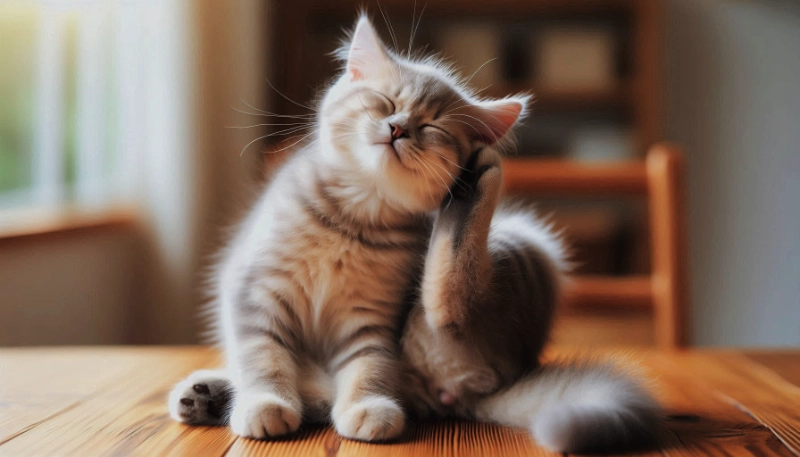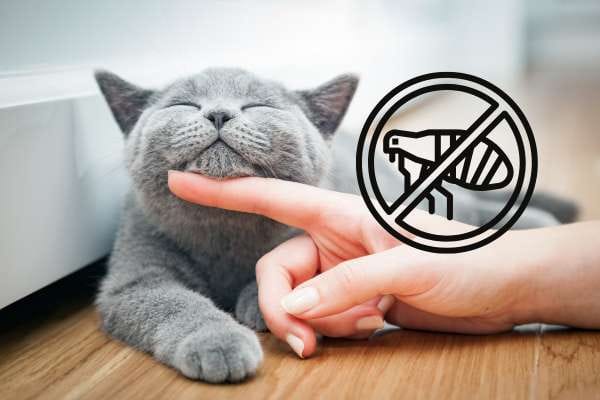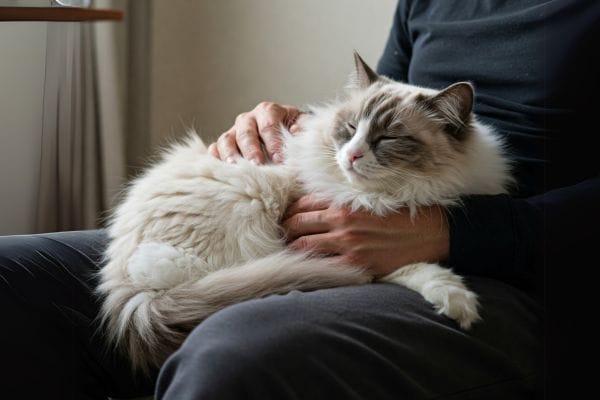When you want to treat cat ear infection, it’s crucial to opt for safe and effective methods to avoid further irritating the affected area. In this article, we will explore at-home remedies that are gentle on cats’ sensitive ears while still providing relief from infection symptoms.
Our goal is to provide you with reliable and easy-to-follow solutions that you can try in the comfort of your own home, ensuring your feline friend receives the best possible care.
Sign Your Cat May Have an Ear Infection
Cat ear infections are a common issue that can be caused by bacteria, yeast, mites, or allergies. Bacteria and yeast thrive in warm, moist environments, making a cat’s ear canal an ideal breeding ground. Mites, such as ear mites, can also infect a cat’s ears and cause discomfort. Allergies to food, environmental factors, or skin conditions can also lead to ear infections.
Common symptoms of cat ear infection include scratching or pawing at their ears, shaking their head frequently, and redness or swelling in the affected ear. Additionally, discharge or a bad odor from the ear can be a sign of an infection. Cats may also exhibit sensitivity when their ear is touched or manipulated.
Recognizing these symptoms early is crucial to prevent further complications and ensure effective treatment. If left untreated, ear infections can lead to chronic pain, hearing loss, and even facial paralysis. Moreover, bacteria can spread to other parts of the body, causing more severe health issues. Early intervention can significantly improve the cat’s quality of life and prevent long-term damage to their ears and overall health.
Safe Home Remedies for Treating Cat Ear Infection
a. Cleaning the Ears
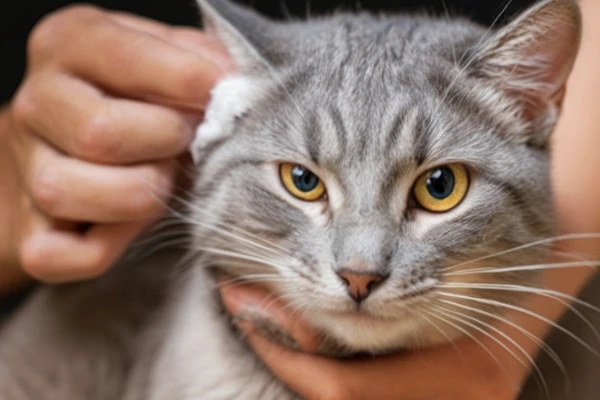
To safely clean a cat’s ears at home, start by gently tilting their head to one side and pouring a small amount of vet-approved ear cleaner or DIY saline solution into the ear canal. Gently massage the base of the ear for 5-10 seconds to help loosen debris. Then, use a cotton ball or soft cloth to wipe away any dirt, wax, or discharge. Avoid using Q-tips, as they can push debris further into the ear canal and cause harm.
When cleaning your cat’s ears, it’s essential to use gentle and safe tools. Cotton balls or soft cloths are ideal for wiping away debris while avoiding harsh chemicals or abrasive materials that can irritate the ear canal. Never use Q-tips, as they can cause more harm than good. Additionally, refrain from using household cleaners, vinegar, or other strong substances that can damage your cat’s sensitive ears. Always consult with your veterinarian if you’re unsure about the best way to clean your cat’s ears or if you notice any signs of infection or discomfort.
b. Apple Cider Vinegar Dilution
Apple cider vinegar is known for its natural antibacterial properties, making it a popular choice for pet care. To safely apply it to your cat’s ears, dilute one part apple cider vinegar with three parts water. Use a cotton ball to gently dab the mixture onto the outer ear, avoiding the ear canal.
This solution can help reduce bacteria and keep your cat’s ears clean. Always monitor for any irritation and consult your veterinarian before use, especially if your cat has existing ear issues.
c. Coconut Oil
Coconut oil possesses antimicrobial properties that can help soothe irritation in a cat’s ears, effectively combating infections and reducing inflammation. To use it as a remedy, gently warm a small amount of coconut oil until it melts, then apply a few drops to your cat’s affected ear.
Massage the base of the ear gently to help the oil penetrate. Allow your cat to shake its head to remove excess oil, and repeat this process a few times a week as needed.
d. Olive Oil
Olive oil can be a gentle and effective way to soften ear wax and remove mites from a cat’s ears. To use olive oil safely, first, warm it up by gently rubbing the bottle between your hands or by placing it in a bowl of warm water for a few minutes.
Then, using an ear dropper, put a few drops of warmed olive oil into the affected ear. Gently massage the base of the ear to help the oil spread and loosen the wax or mites. Repeat daily for 3-5 days, then consult a veterinarian if symptoms persist.
e. Aloe Vera Gel
Aloe vera offers soothing properties that can effectively reduce inflammation and irritation in a cat’s ears. Its natural antibacterial and anti-inflammatory effects help alleviate discomfort and promote healing.
To use pure aloe vera gel as a remedy, gently clean the affected area with a damp cloth, then apply a small amount of the gel to the inflamed ear using your fingertip or a cotton swab. Be cautious to ensure your cat does not ingest too much, and monitor for any allergic reactions.
Warning Signs of a Worsening Infection
Ear infections in cats can manifest through various symptoms, including worsening discharge from the ear, swelling, a foul odor, and signs of pain such as excessive scratching or shaking of the head. Cats may also exhibit behavioral changes, such as lethargy or loss of appetite, and in severe cases, develop a fever. If you notice these signs, it is crucial to seek immediate veterinary attention, as early intervention can prevent complications.
Failure to treat ear infections promptly can result in rapid escalation, potentially causing severe health complications like hearing impairment or the spread of infection to critical areas like the brain. Persistent infections may lead to irreversible damage in the ear structure, heightening the chances of recurrent issues. Seeking timely treatment not only relieves immediate discomfort but also preserves your cat’s general health and quality of life, facilitating a smoother recovery process.
When to Consult a Veterinarian
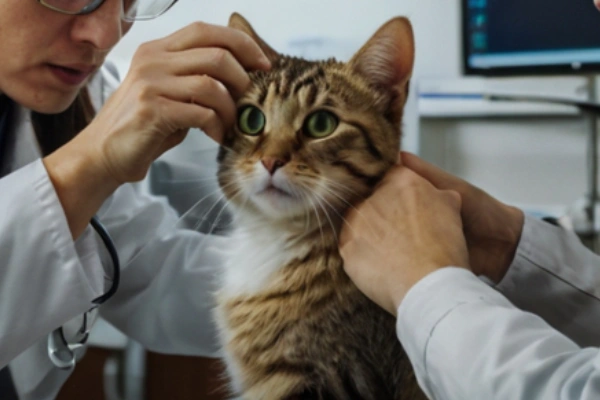
Before deciding to use home remedies to treat your cat’s ear infection, make sure your cat is not showing any of these symptoms:
- Severe or chronic infections
- Presence of pus or blood
- Persistent pain or discomfort
Because these symptoms indicate that your cat may require professional care from a veterinarian, we always recommend consulting a veterinarian before trying any of the home remedies.
Prevention Tips to Avoid Future Cat Ear Infection
Regular Ear Cleaning Routine
Maintaining your cat’s ear health starts with regular cleaning. Aim to clean your cat’s ears once every one to two weeks, using a vet-approved ear cleaner. Gently wipe the outer ear with a cotton ball, avoiding deep insertion to prevent damage. Consistent cleaning helps remove wax and debris that can lead to infections.
Proper Diet and Immune Support
A balanced diet rich in nutrients significantly enhances your cat’s immune system. Foods supplemented with omega-3 fatty acids support overall health and promote stronger immunity, reducing the risk of infections, including ear issues. Consult your veterinarian about incorporating appropriate supplements into your cat’s diet for optimal benefits.
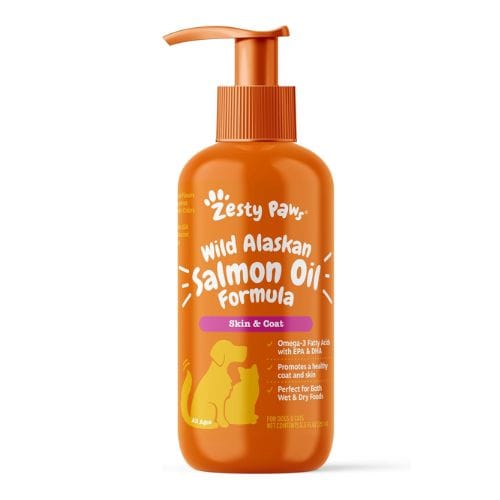
Wild Alaskan Salmon Oil Formula for Cats – Omega 3 Skin & Coat Support
•A pet supplement you can trust – Zesty Paws understands how much your pet’s wellness means to you
• A tasty & body nourishing treat for cats – Essential fatty acids for a healthy coat.
• Healthy, powerful Omega fatty acids – This premium Salmon Oil is rich with Omega-3 & Omega-6 fatty acid from EPA & DHA, that can help keep skin & coats soft & support the holistic health of your pet.
Avoid Environmental Triggers
Common allergens such as pollen, dust, and mold can contribute to cat ear infection. Keep your home clean, vacuum regularly, and consider using air purifiers to minimize allergen exposure. By tackling environmental triggers, you can help safeguard your cat’s ear health and overall well-being.
Also read: Ultimate Cat Care Guide
Final Words
Treating cat ear infections with safe, natural remedies can be effective, but it’s crucial to monitor your pet’s symptoms closely. This approach minimizes exposure to harsh chemicals and supports your cat’s overall well-being. Symptoms like excessive scratching or foul odor may indicate the need for intervention, so always keep a watchful eye on your furry friend’s condition.
While home remedies can work well for mild infections, they are not always sufficient for severe cases, so professional veterinary care is essential. Additionally, maintaining a regular ear-care routine like cleaning and checking your cat’s ears can significantly reduce the risk of future infections. By staying proactive, you can help keep your feline companion healthy and comfort.



